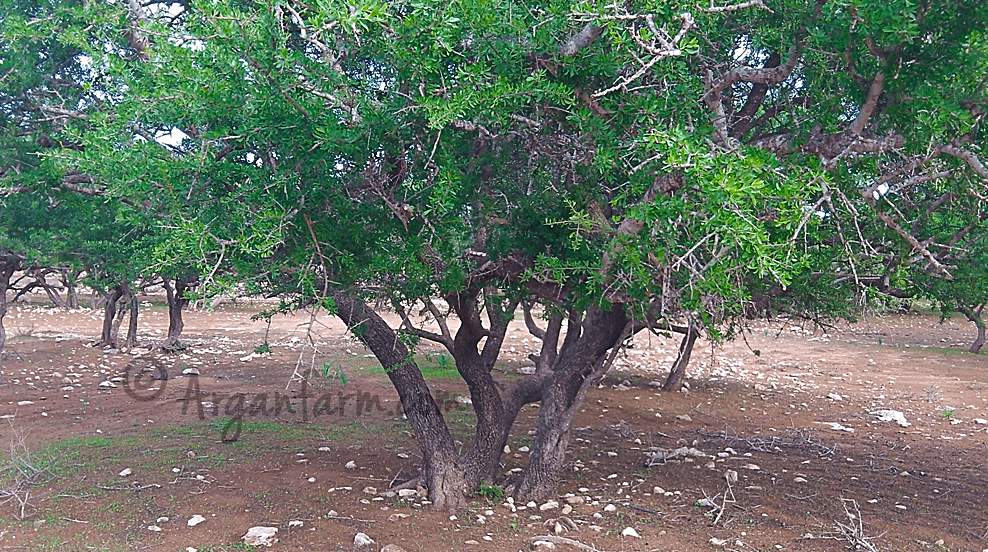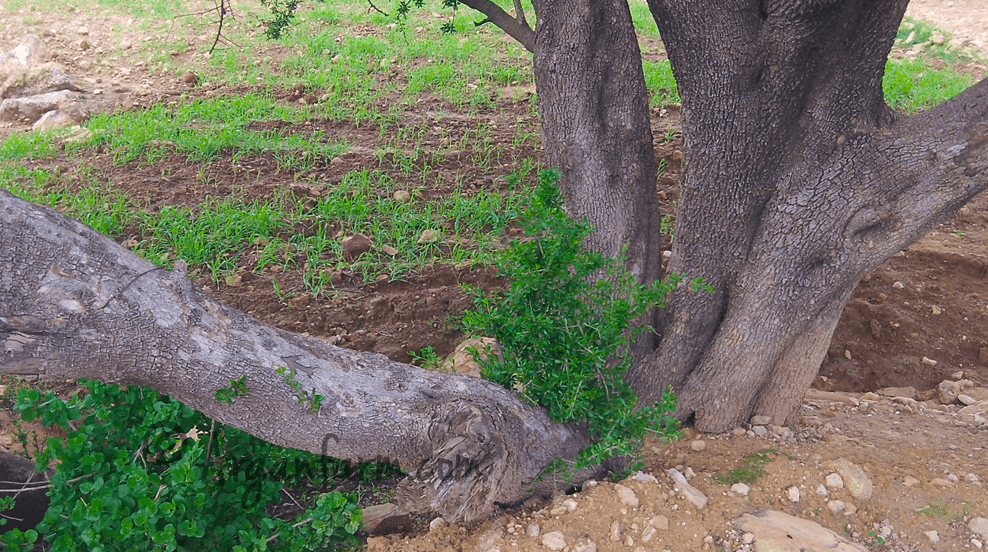—

Argania Spinosa or The Argan tree, resembles the olive tree to a certain degree.
It is a rough, thorny, weather-resistant tree that requires no cultivation.
The Argania Spinosa is extremely well adapted to environmentally-arid conditions prevailing in southwest Morocco.
It can reach heights of 7-10 meters. Its short and twisted stems and trunks are perfectly made for goats to climb its branches and feed on its oval-shaped small leaves as well as on its fruit. The natural Argan tree yields fruits the first time when it´s around 30-50 years old. After that, the Argania Spinosa bears fruits in late spring and yields between 120 and 180 kilograms of fruit (containing the Argania Spinosa kernel) used to extract virgin Argan oil.

The Root System of The Argania Spinosa:
Its amazingly strong and deep penetrating root system is considered a highly important stabilizing element in the arid ecosystem.
The Argania Spinosa root system has the stunning ability to absorb the water necessary for the survival of the Argan tree.
The depths may go down to 35 meters.
This allows it to live between 150 and 400 years in the harsh climate of its environment.
But it also has a vital environmental role as it protects the soil erosion against heavy rain and wind erosion and thereby maintains its fertility. The Argan tree — scientifically recognized as Argania Spinosa — is also considered as the final barrier buffering at the border of the Sahara against the threatening desertification. It provides landscape stability and shade for different agricultural products in the surroundings. Many families own Argan trees for personal uses. These provide food for horses and farm animals in some parts of Morocco. Its wood and fruit nut-shells are also used as a source of fuel by locals. Yet the chief benefit of Argania Spinosa is the pure organic Argan oil extracted out from the Argan nuts.

2 comments
Gilbert Sambolin
How many years does it take the ARGAN TREE to produce its fist batch of fruit assuming ideal conditions and good soil?
Bader Eddine
Hi Gilbert,
Sorry for the late reply, your comment landed unfortunately in the spam filter.
To your question, here is an article and a video that will give you all the necessary information you need about the Argan tree >
https://www.arganfarm.com/argan-tree-history/argania-spinosa-anatomy/
Regards,